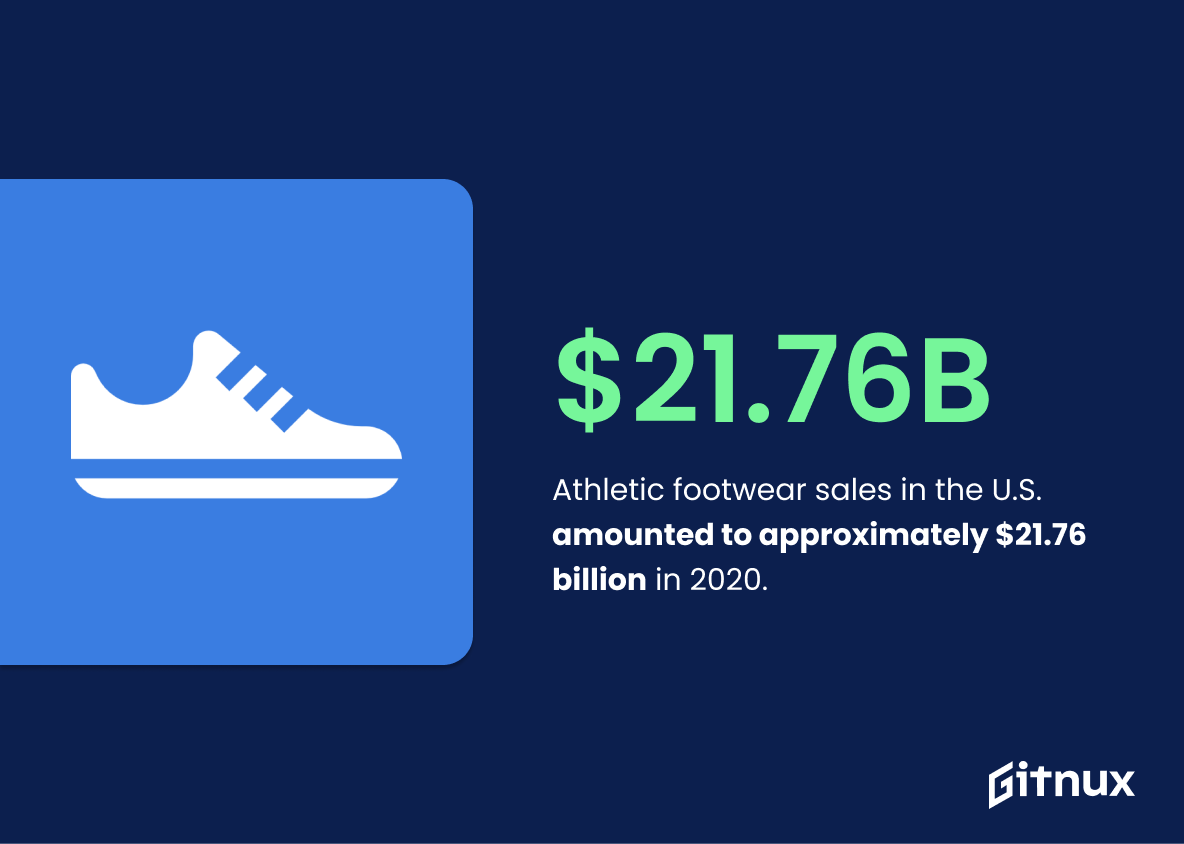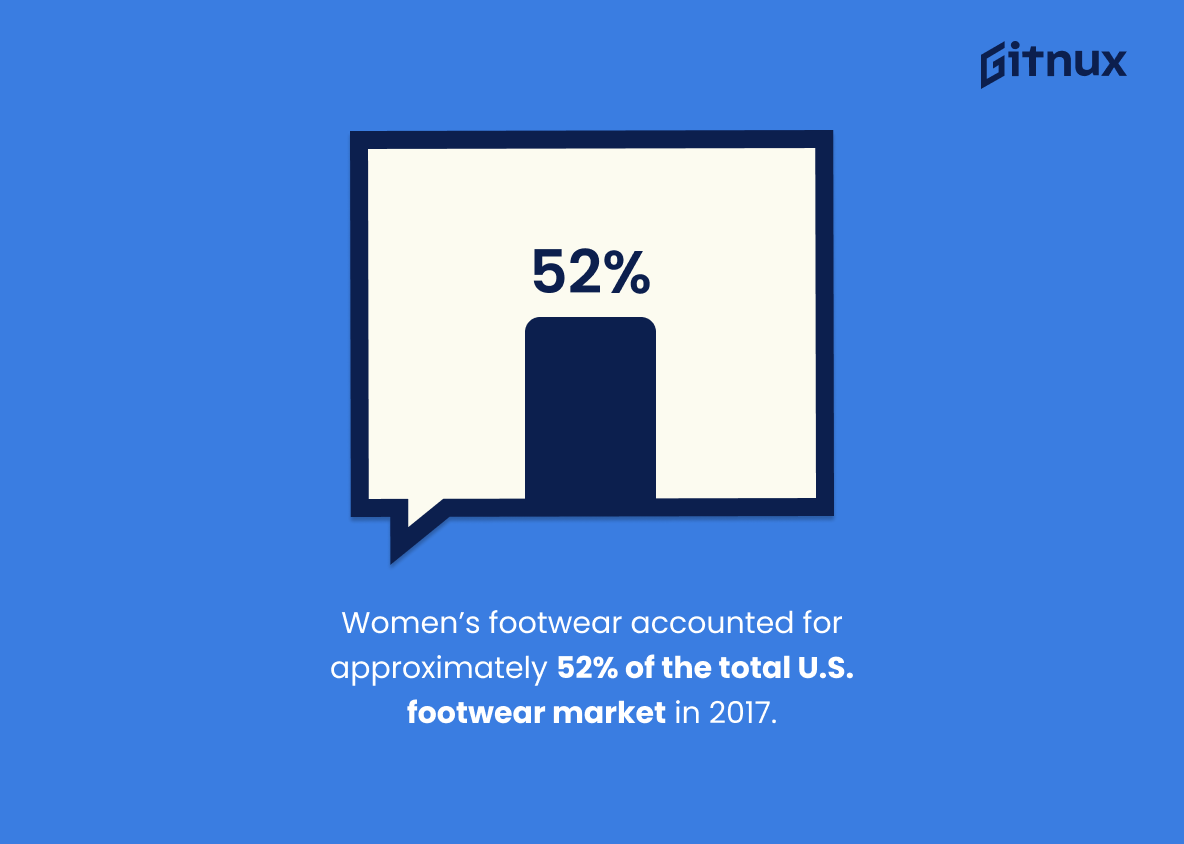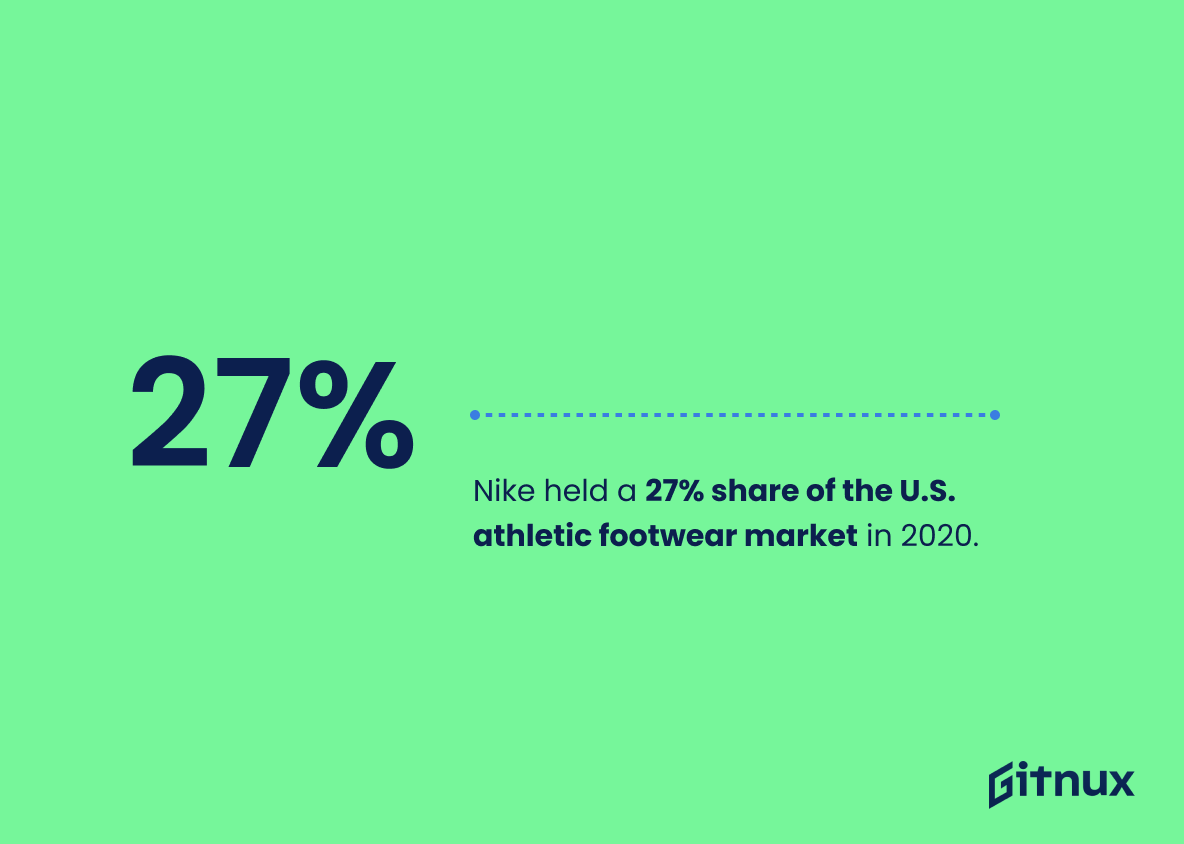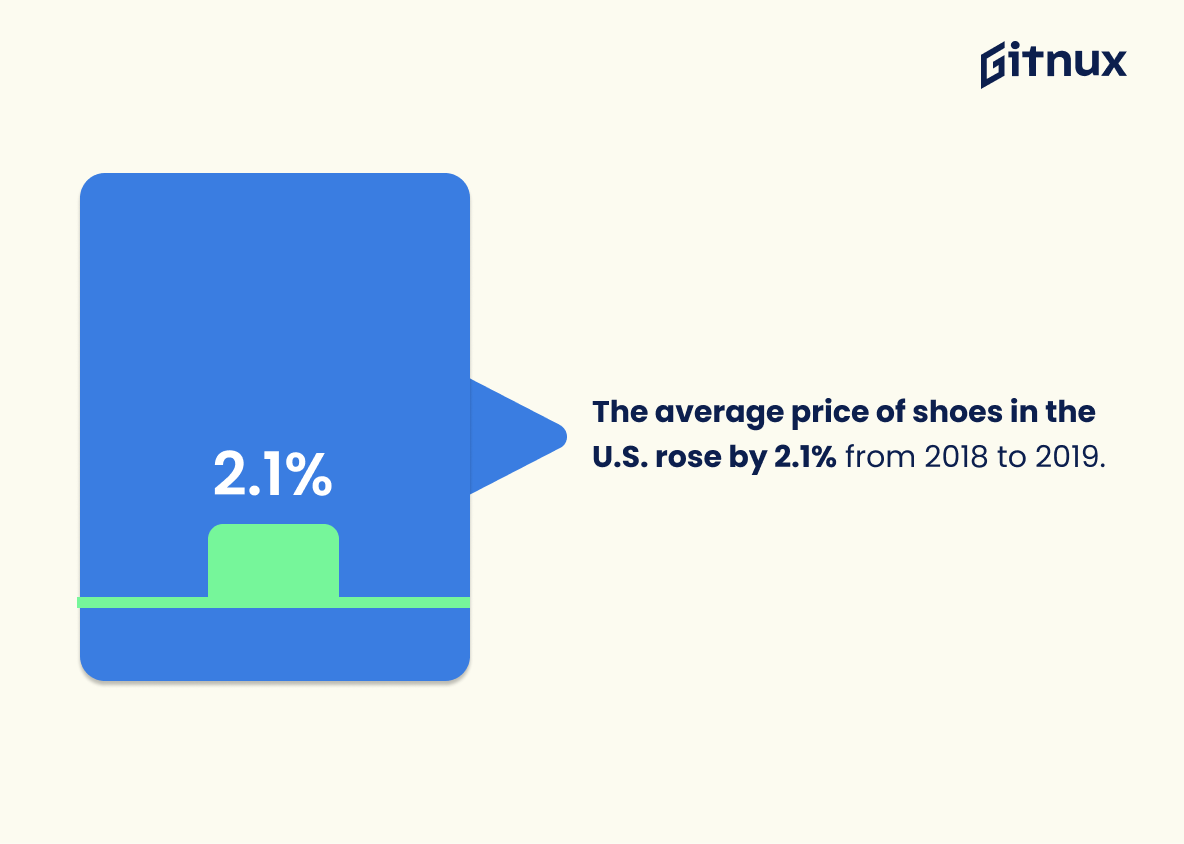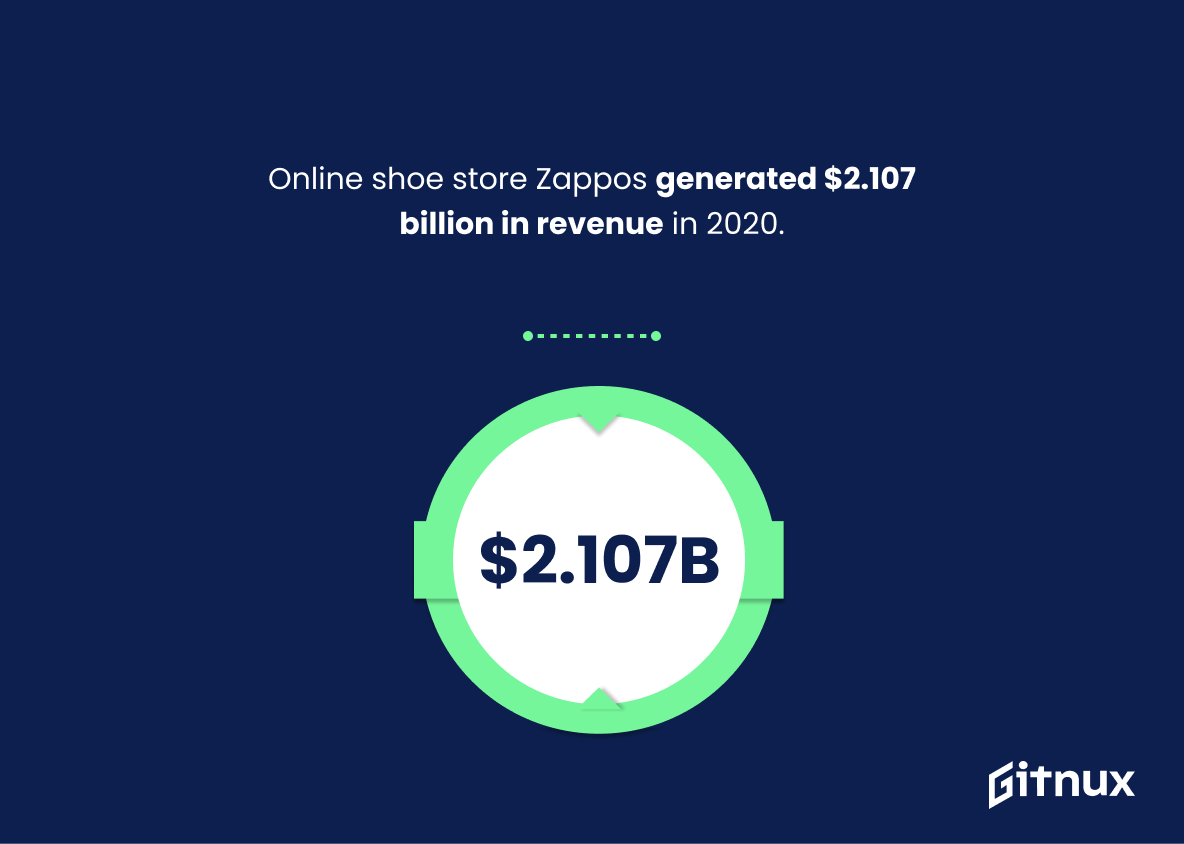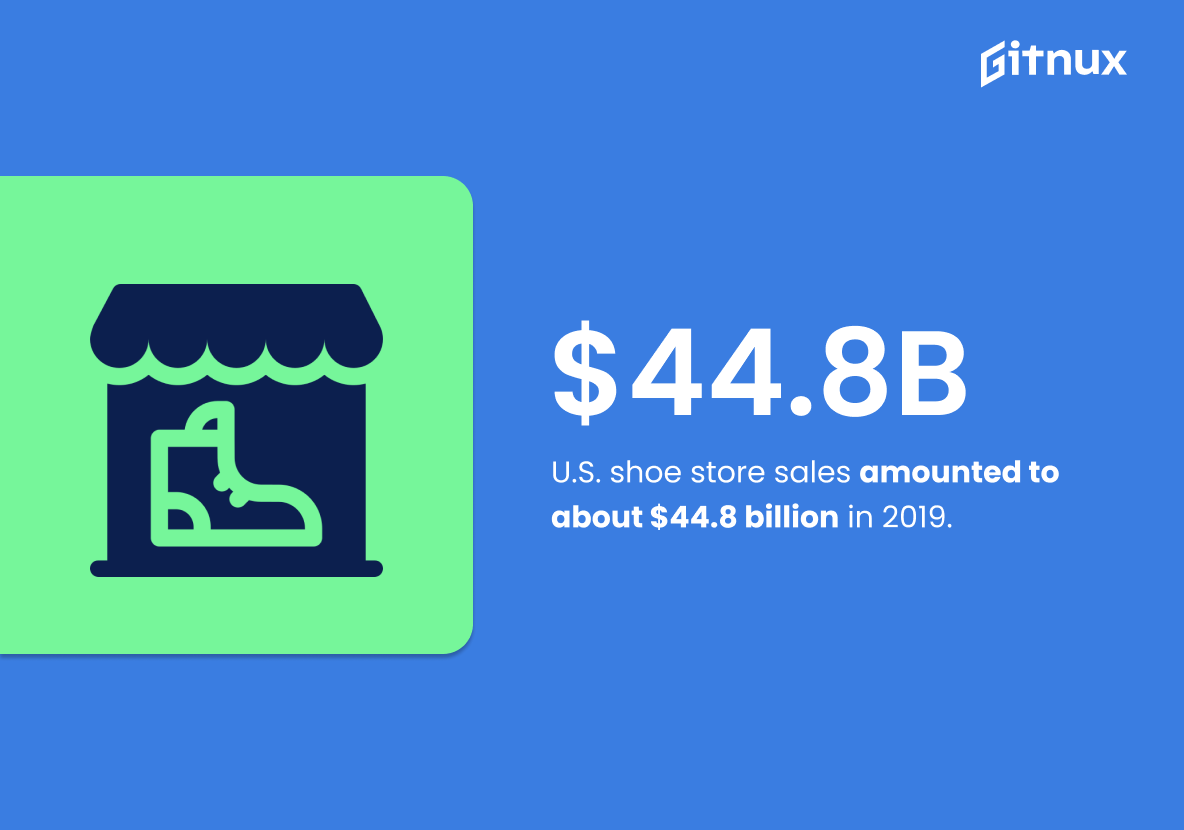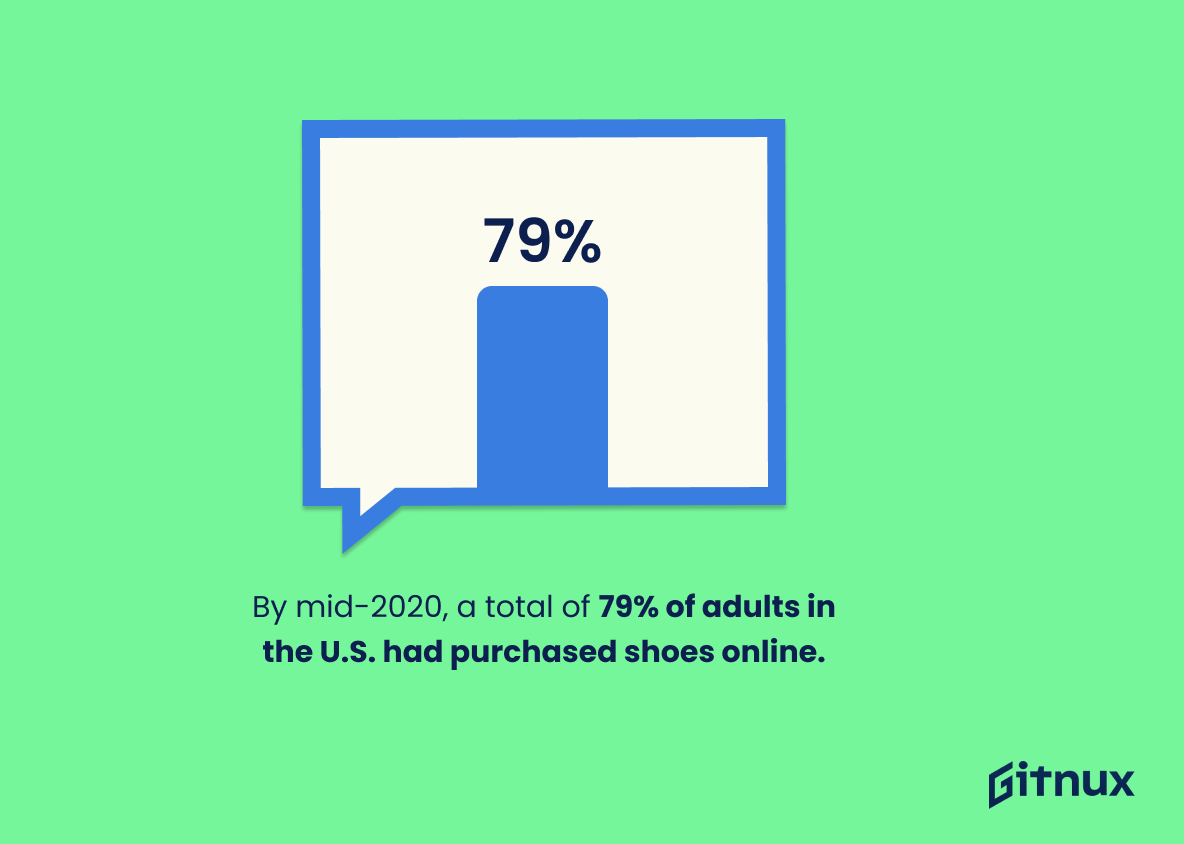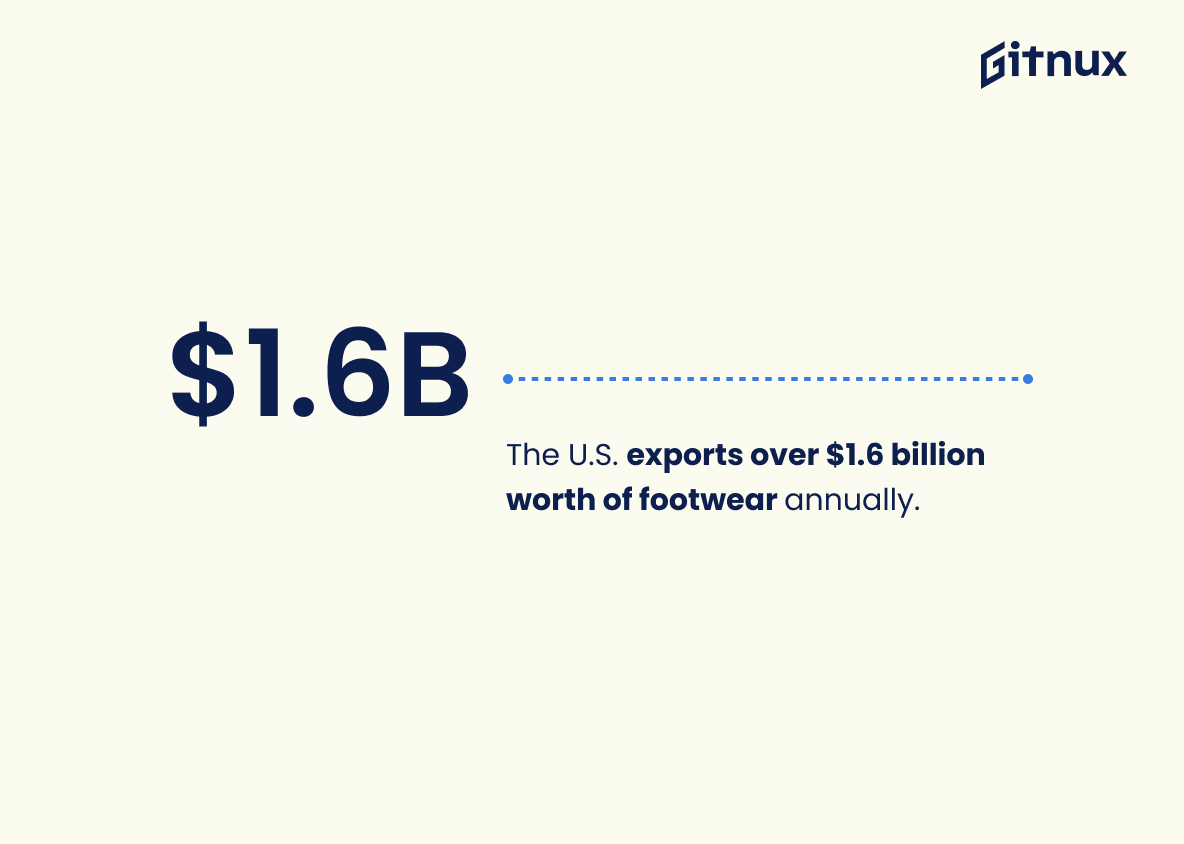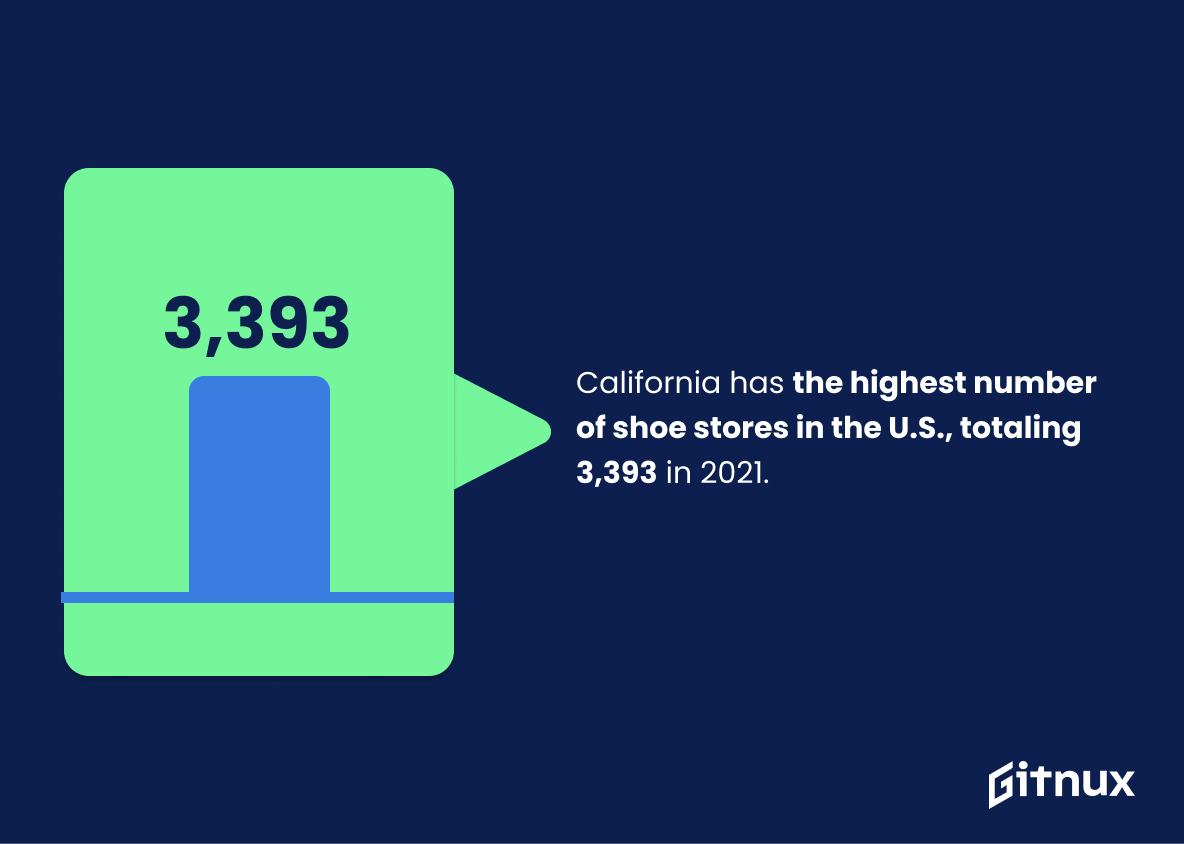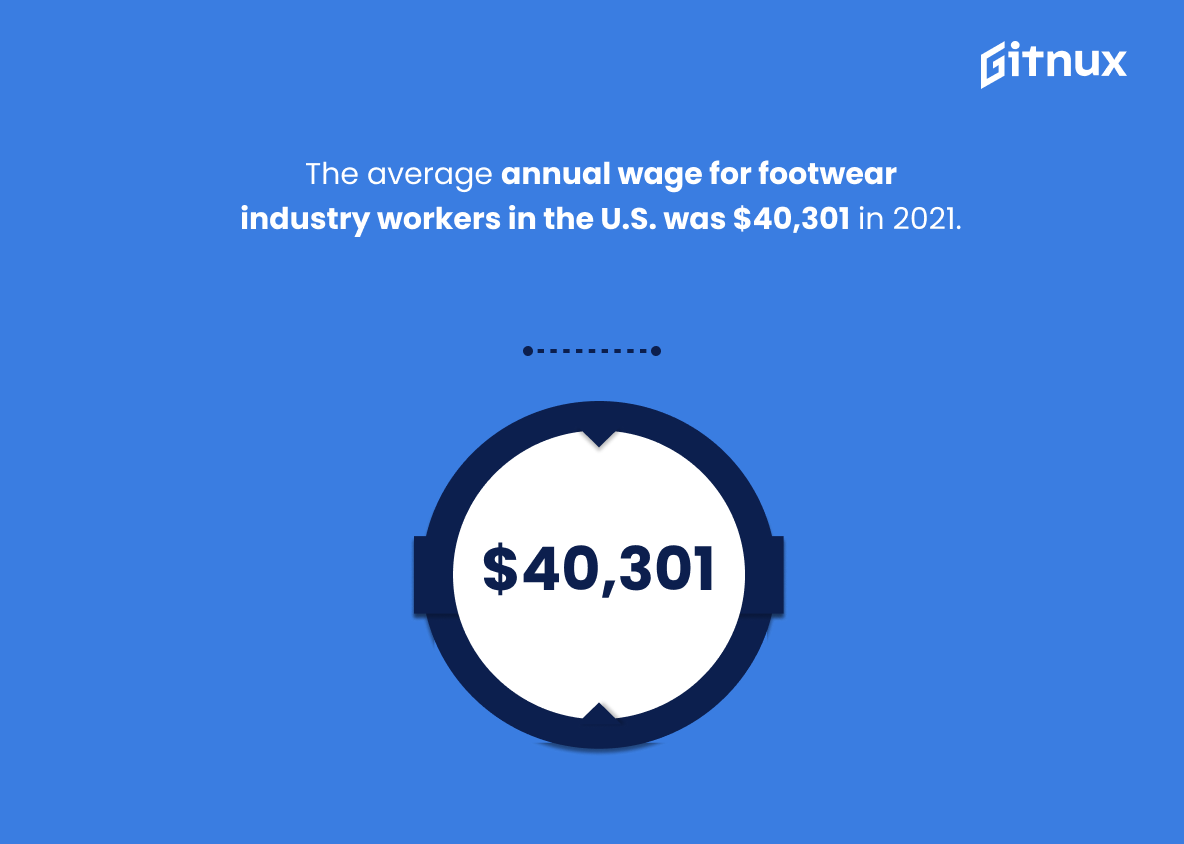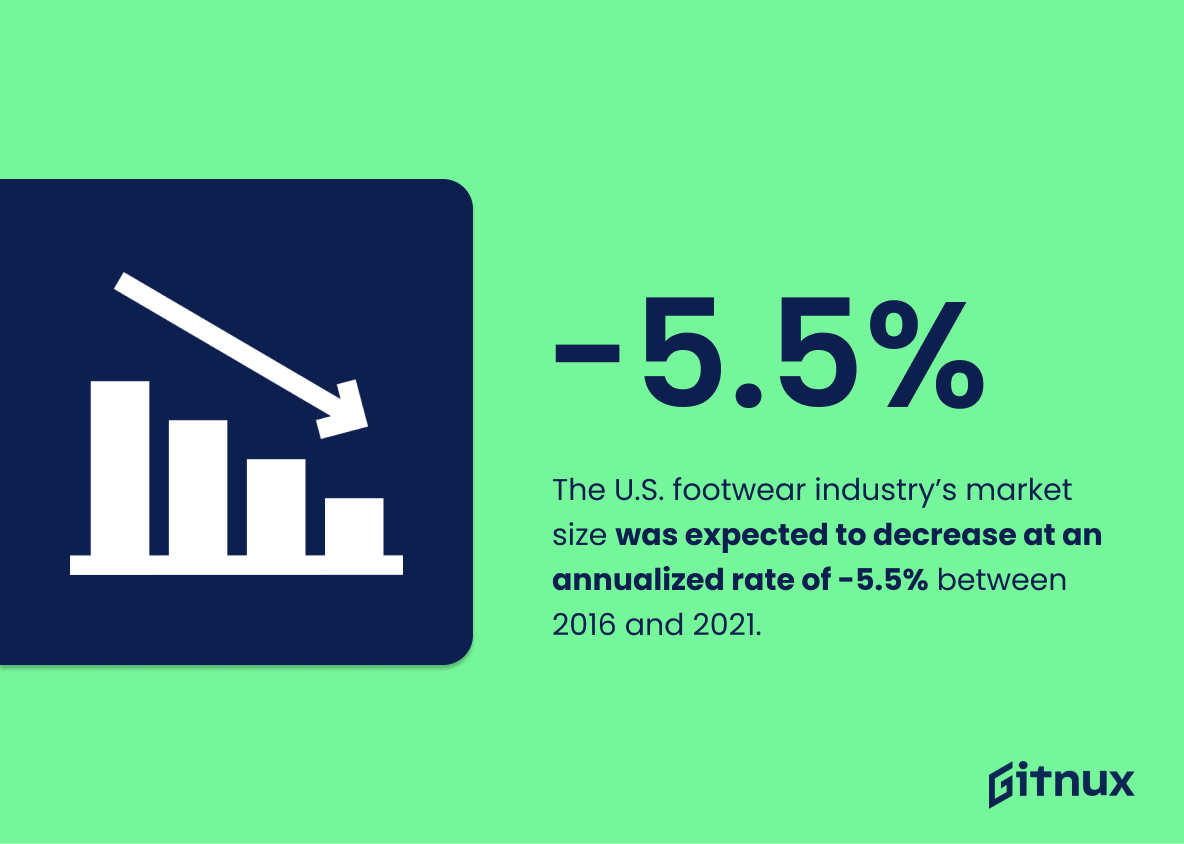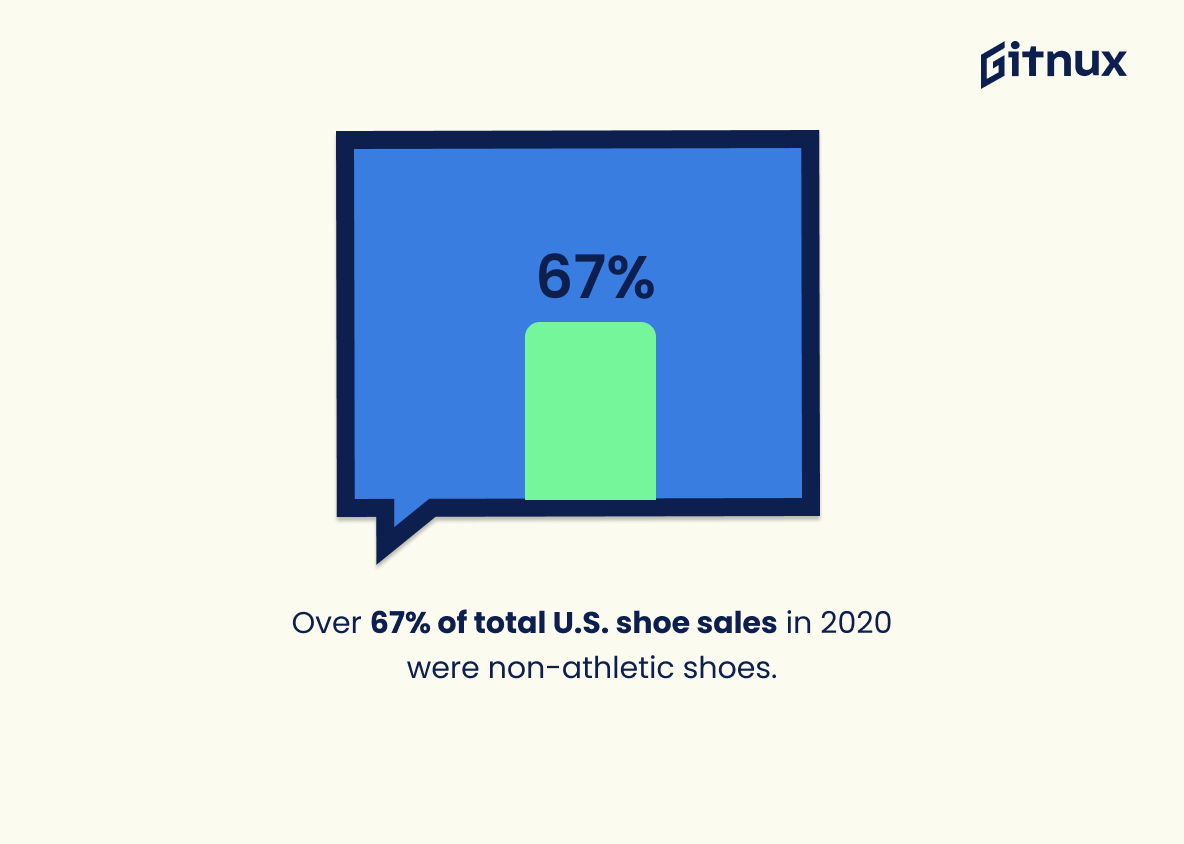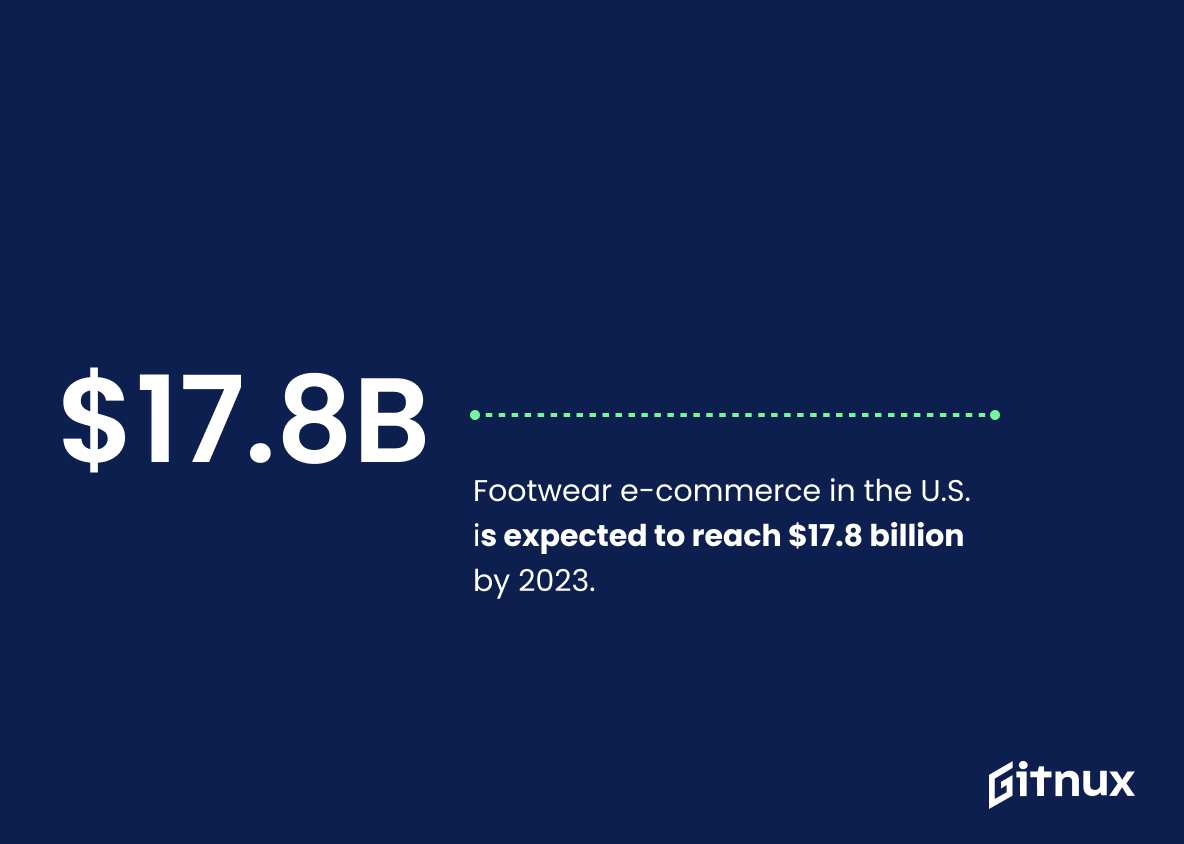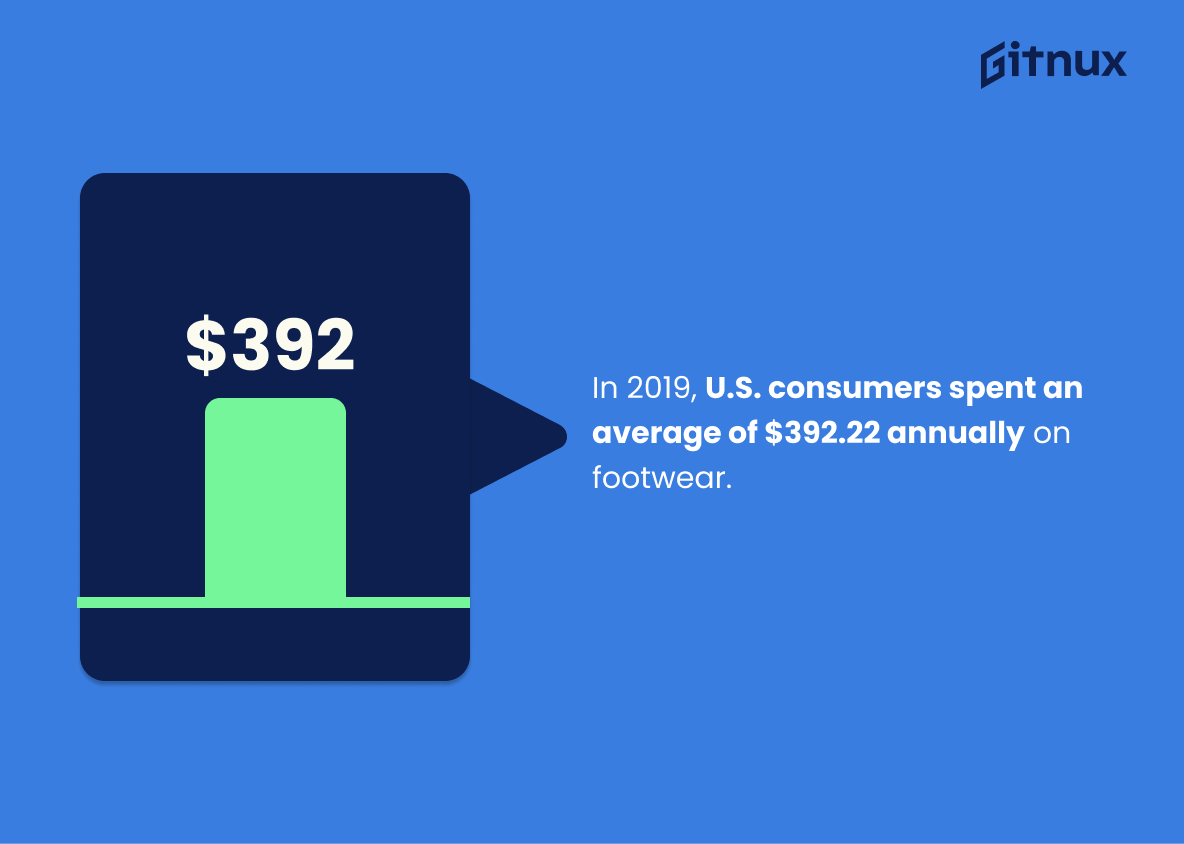The U.S. footwear industry is a major contributor to the economy, with an estimated value of $79.86 billion in 2017 and over 188,000 employees in 2020. Athletic footwear sales alone amounted to approximately $21.76 billion that same year, while imported shoes made up 98% of the market share in 2019. Women’s footwear accounted for 52% of total sales and Nike held 27% of the athletic shoe market share by mid-2020; meanwhile, online store Zappos generated revenue totaling $2107 million during this period as well. The average price for shoes rose 2%, from 2018 to 2019; however overall shoe store sales only reached about 44$8 billion due to 79% adults having purchased their shoes online instead by mid-year 2020 – which was also when exports totaled more than 1$6 billion annually. California had 3393 stores at 2021’s start – making it home to most US stores – but workers earned an average annual wage just shy of 40k dollars that same year despite a 5 point 5 percent decrease expected between 2016 and 2021 according to IBIS World statistics on luxury brands projected 749 million dollar growth through 2026 too.
U.S. Footwear Industry Statistics Overview
Athletic footwear sales in the U.S. amounted to approximately $21.76 billion in 2020.
This statistic is a testament to the immense popularity of athletic footwear in the United States. It speaks to the sheer size of the U.S. footwear industry and the amount of money that consumers are willing to spend on athletic footwear. It also highlights the potential for growth in the industry, as the demand for athletic footwear continues to increase. This statistic is an important indicator of the health of the U.S. footwear industry and provides valuable insight into the current state of the market.
Women’s footwear accounted for approximately 52% of the total U.S. footwear market in 2017.
This statistic is a telling indication of the immense influence women have in the U.S. footwear market. It demonstrates that women are the primary consumers of footwear in the U.S., and that the industry must take their preferences and needs into account when designing and marketing products. This statistic is an important reminder that the U.S. footwear industry must remain mindful of the needs of its female customers in order to remain competitive.
Nike held a 27% share of the U.S. athletic footwear market in 2020.
This statistic is a testament to Nike’s success in the U.S. athletic footwear market in 2020. It demonstrates the company’s ability to capture a significant portion of the market share, indicating that Nike is a major player in the industry. This statistic is important for anyone looking to gain insight into the U.S. footwear industry, as it provides a snapshot of the current market landscape.
The average price of shoes in the U.S. rose by 2.1% from 2018 to 2019.
This statistic is indicative of the overall trend in the U.S. footwear industry, showing that prices are on the rise. This is important to note for anyone interested in the U.S. footwear industry, as it can help them better understand the current market and make more informed decisions.
Online shoe store Zappos generated $2.107 billion in revenue in 2020.
This statistic is a testament to the success of the U.S. Footwear Industry, demonstrating that even in the midst of a global pandemic, the industry was able to generate a significant amount of revenue. It is a clear indication that the industry is thriving and that consumers are still willing to invest in footwear.
U.S. shoe store sales amounted to about $44.8 billion in 2019.
This statistic is a testament to the immense size and success of the U.S. footwear industry. It shows that the industry is thriving and that consumers are willing to invest in quality footwear. This statistic is also a great indicator of the overall health of the U.S. economy, as it shows that people are spending money on goods and services. Furthermore, this statistic can be used to compare the U.S. footwear industry to other industries, and to track the industry’s growth over time.
By mid-2020, a total of 79% of adults in the U.S. had purchased shoes online.
This statistic is a telling indication of the growing trend of online shopping for shoes in the U.S. It speaks to the increasing popularity of e-commerce and the convenience it offers to consumers. It also highlights the potential of the U.S. footwear industry to capitalize on this trend and reach a wider customer base.
The U.S. exports over $1.6 billion worth of footwear annually.
This statistic is a testament to the strength of the U.S. footwear industry, demonstrating its ability to produce and export a significant amount of product each year. It is indicative of the industry’s success in the global market, and speaks to the potential for further growth and development. This statistic is an important part of understanding the U.S. footwear industry and its place in the global economy.
California has the highest number of shoe stores in the U.S., totaling 3,393 in 2021.
This statistic is a testament to the importance of the footwear industry in California. It speaks to the sheer number of businesses that are dedicated to providing shoes to the people of the state, and the economic impact that the industry has had on the region. It also serves as a reminder of the importance of the footwear industry in the U.S. as a whole, and how it contributes to the overall economy.
The average annual wage for footwear industry workers in the U.S. was $40,301 in 2021.
This statistic is a telling indication of the financial health of the U.S. footwear industry. It reveals that the average annual wage for workers in the industry is relatively high, suggesting that the industry is doing well and providing good wages to its employees. This is an important point to consider when discussing the overall success of the U.S. footwear industry.
The U.S. footwear industry’s market size was expected to decrease at an annualized rate of -5.5% between 2016 and 2021.
This statistic is a crucial indicator of the U.S. footwear industry’s current and future state. It paints a picture of the industry’s overall health, showing that the market size is expected to shrink over the next five years. This information is essential for anyone looking to gain insight into the U.S. footwear industry, as it provides a clear indication of the industry’s current and future trends.
Over 67% of total U.S. shoe sales in 2020 were non-athletic shoes.
This statistic is a telling indication of the U.S. footwear industry’s current state. It reveals that the majority of shoe sales in the U.S. are not athletic shoes, suggesting that the demand for non-athletic shoes is higher than that of athletic shoes. This could be due to a variety of factors, such as the changing fashion trends or the increasing popularity of casual footwear. This statistic is important to consider when discussing the U.S. footwear industry, as it provides insight into the current market and consumer preferences.
Footwear e-commerce in the U.S. is expected to reach $17.8 billion by 2023.
This statistic is a testament to the immense potential of the U.S. footwear industry. It shows that the industry is growing rapidly and is expected to reach a staggering $17.8 billion by 2023. This is a clear indication that the U.S. footwear industry is a lucrative and profitable sector that is worth investing in.
In 2019, U.S. consumers spent an average of $392.22 annually on footwear.
This statistic is a telling indication of the strength of the U.S. footwear industry. It shows that despite the ever-changing trends and styles, Americans are still willing to invest in quality footwear, and that the industry is thriving. This statistic is a great starting point for a blog post about U.S. Footwear Industry Statistics, as it provides a snapshot of the current state of the industry.
There were approximately 26,898 shoe stores in the U.S. in 2021.
This statistic is a telling indication of the size and scope of the U.S. footwear industry. It demonstrates the sheer number of stores dedicated to selling shoes, and the potential for growth in the industry. It also speaks to the level of competition in the market, as well as the potential for new entrants to the market. This statistic is an important piece of information for anyone looking to gain insight into the U.S. footwear industry.
The luxury footwear segment in the U.S. is projected to reach $7.49 billion by 2026.
This statistic is a testament to the immense potential of the U.S. footwear industry. It shows that the luxury footwear segment is expected to experience significant growth in the coming years, indicating that the industry is ripe for investment and expansion. This is an important piece of information for anyone interested in the U.S. footwear industry, as it provides insight into the potential of the sector and the opportunities that may be available.
Conclusion
The U.S. footwear industry is a thriving and competitive market, with the total value of the industry estimated to be $79.86 billion in 2017 and 188,000 employees as of 2020. Athletic footwear sales amounted to approximately $21.76 billion in 2020 while women’s shoes accounted for 52% of the total U.S shoe market that same year; Nike held 27% share of this segment alone by mid-2020. The average price rose 2%, imports made up 98%, exports totaled over 1$6 billion annually, online purchases were 79%. California had 3393 stores in 2021 with an annual wage rate at 40301 dollars per annum; however, overall size was expected to decrease -5%. Non-athletic shoes dominated 67% sales volume while ecommerce reached 17$.8billion by 2023 and consumers spent 392 dollars on average each year across 26 898 stores nationwide where China supplied 71 %of imported pairs (2 .3b). Finally luxury segment was projected 749 million USD by 2026
References
0. – https://www.prnewswire.com
1. – https://www.statista.com
2. – https://www.census.gov
3. – https://www.globenewswire.com
4. – https://www.ibisworld.com
5. – https://www.npd.com
